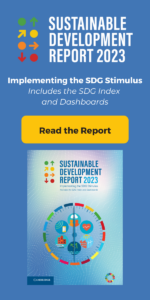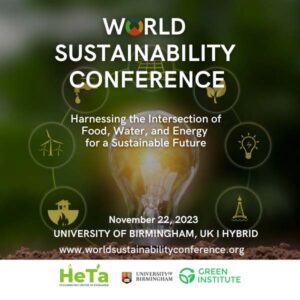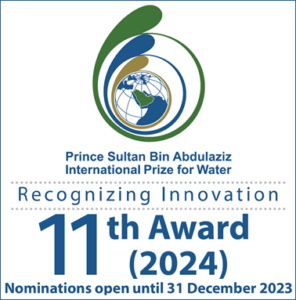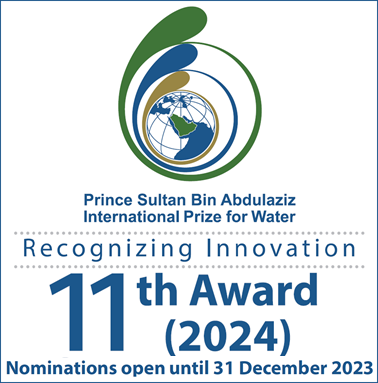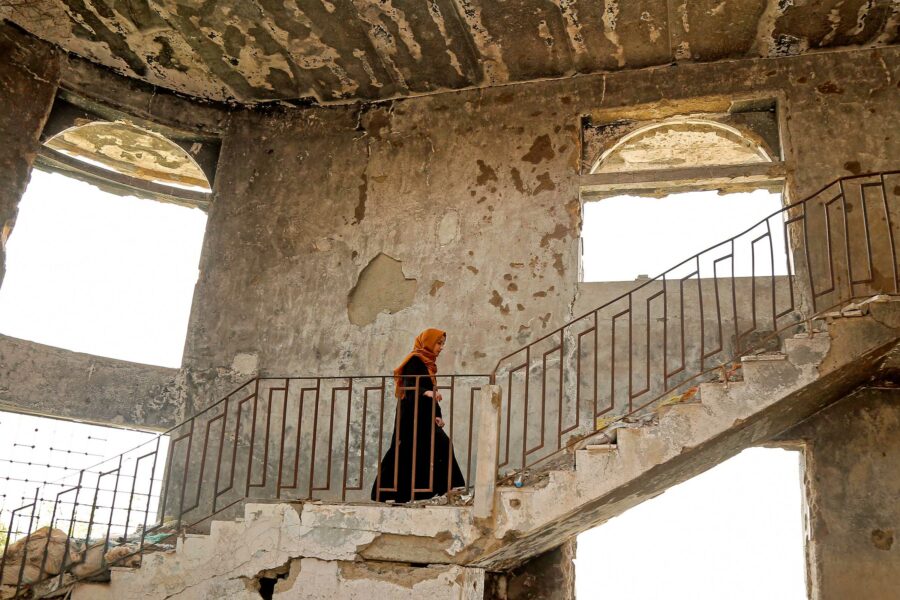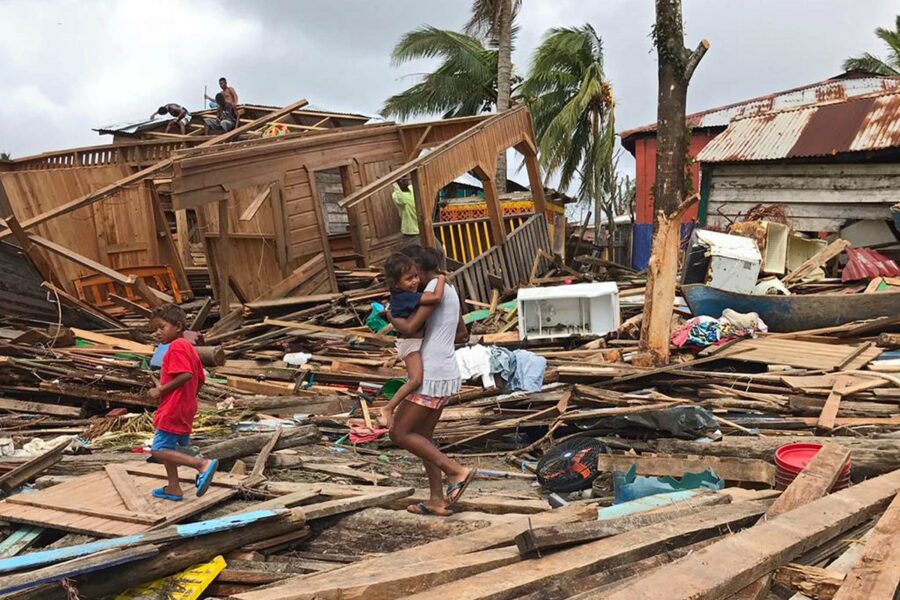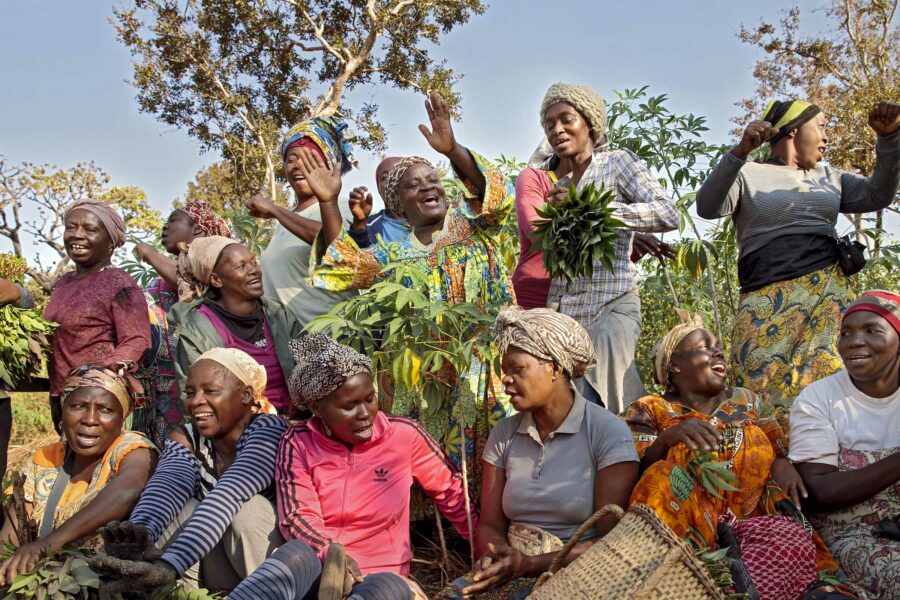Climate-proofing to sustain peace
Vulnerability to climate change is higher in many places suffering war, yet peacebuilding efforts often fail to consider climate impacts. In a warming world, where conflict and crisis persist, ensuring that efforts to sustain peace also support climate action must be a top priority
Climate — Global
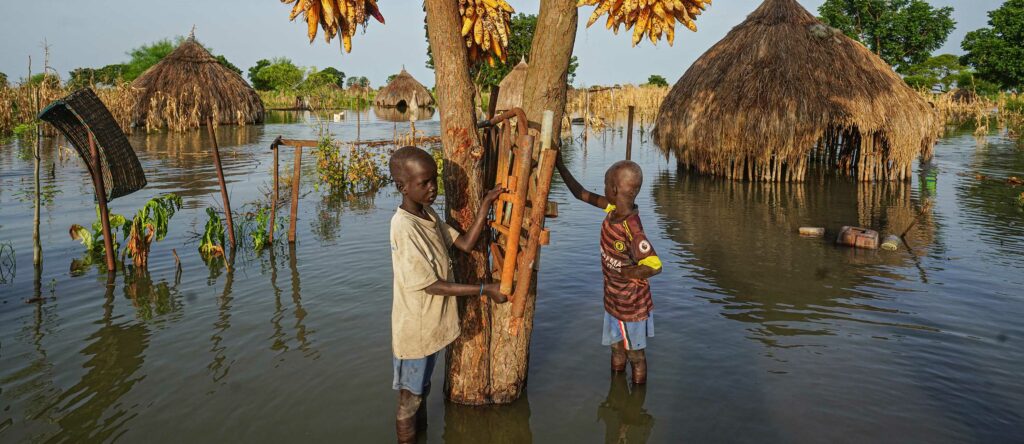
As we took stock of the scale of devastation in Pakistan (described by the UN Secretary-General as evidence of the “sheer inadequacy of the global response to the climate crisis, and the betrayal and injustice at the heart of it”), thousands of miles away in Florida a category 4 hurricane made landfall, causing loss of life, and billions in losses and damages.
The destruction caused by climate-related extreme weather events will likely continue to feel unrelenting for many others on the frontlines. Scientists have found that we are much closer than we thought to triggering tipping points in the Earth’s systems. And still we continue to test the limits of adaptation. The 2021 and 2020 Adaptation Gap reports show that investments are not keeping pace at all with needs and are indicative of the direction of these trends. In light of this, the UN Secretary-General set a target in March 2022 to ensure that everyone be protected by early warning systems by 2027. Coverage in Africa, however, is just 60%.
There is so much to be said about what we can do. But some of the questions that we can’t answer –about the continued lack of prioritization of climate action and, likewise, the challenges we struggle to surmount in doing so – relate to conflict, fragility, crisis, and insecurity. While no one denies they are pressing and urgent, climate and environment as policy agendas are often deprioritized in fragile and conflict-affected contexts. This is the case even when adaptation and access to energy in these same countries are greatly needed and when conflict itself contributes to the destruction of the actual assets needed to adapt to and mitigate climate change.
Progress to peace may not be conductive to climate action either, due to post-conflict economic recovery and increased pressure on natural resources. The need for higher prioritization cannot be understated. An estimated 40% of intrastate conflict over the last 60 years has been linked to natural resources. Where conflicts are linked to natural resources and/or environmental degradation, recurrence is twice as likely within five years.
While there is no direct link claimed or asserted between climate and conflict, the Sixth Assessment Report of the Intergovernmental Panel on Climate Change shows that vulnerability to climate change is higher in places suffering violent conflict. Solutions that address climate-sensitive livelihoods and contribute to women’s empowerment can reduce risks to peace. Strengthening adaptive capacity, meanwhile, can mitigate the potential negative impacts of climate-related displacement.
Prioritizing peace and climate action
A successful climate agenda in countries suffering conflict and fragility must not only contribute to peacebuilding objectives, but should go a step further and climate-proof efforts to sustain peace. Peace and security actors have in recent years begun to understand this and to consider climate risk more holistically. Take, for example, the UN Security Council, the African Union Commission, the EU, and the Pacific Island Forum. Climate change has been recognized in resolutions, mandates, and strategies. NATO has conducted an impact assessment and is also developing an action plan on climate change and security. In terms of policy, strategy, and planning, there are nationally determined contributions under the Paris Agreement and national adaptation plans that do consider climate-related security risks and can serve as a blueprint for policy mainstreaming.
On the ground, although much peacebuilding work takes place in environments highly vulnerable to climate change, it is still for the most part “climate-blind.” One exception is the 2018 Regional Strategy for the Stabilization, Recovery, and Resilience of the Boko Haram-affected Areas of the Lake Chad Basin by the Lake Chad Basin Commission and the African Union Commission. It observes that, confronted with climate change, desertification, and the loss of traditional livelihoods, local populations may “explore alternative livelihoods, including violent extremism.” It includes climate-fragility assessments to inform the planning process and stresses that “all future investment in socio-economic development must be climate-proofed.”
Post-conflict stabilization efforts can serve as an opportunity to deploy low-carbon technologies at the outset of reconstruction efforts. Such efforts can avoid costlier retrofitting later on, and help shift from humanitarian and emergency response to adaptation and resilience. Climate change vulnerability, impacts, and risks are also important to state-building and to our efforts to prevent violent extremism, just as they are to peacebuilding. In contexts where natural resources are constrained, they may be instrumentalized against local populations. Non-state armed groups may play a regulatory role in the management of natural resources or may even assume the role of alternative service providers in response to climate-related extreme weather events, particularly where there is a low state presence. This can not only strengthen these groups’ perceived legitimacy, but can also help aid recruitment efforts. In demobilization, disarmament, and reintegration efforts, the role of natural resources as well as climate change and environmental degradation (as they impact on climate-sensitive livelihoods) can be key to success and sustainability.
Climate finance and the elusive peace dividend
To climate-proof the work of sustaining peace, we will require not only more agile climate financing. We will also need to understand climate finance in a way that goes beyond socio-economic co-benefits and considers the peace co-benefit or “dividend”. So far, this has been missing. Peace, like conflict, is notable for its absence in the global goal on adaptation compilation report, the first global stocktake on the state of adaptation efforts, experiences, and priorities, and the ongoing debate on the New Collective Quantitative Goal on Climate Finance. From the perspective of Agenda 2030, there is little synergetic understanding of the nexus between Sustainable Development Goals 7 (affordable and clean energy), 13 (climate action), and 16 (peace, justice, and strong institutions).
However, the UN’s work in this space is helping to promote innovation. UNDP’s study on climate finance for sustaining peace (with the Climate Security Mechanism and Nataij Group, launched at COP26) shows that countries affected by conflict and fragility and suffering some of the highest levels of climate change vulnerability receive the lowest levels of climate finance. Between 2014 and 2021, non-fragile states received USD 161.7 per person in multilateral climate finance through the vertical funds. Fragile states, however, received just USD 10.8 and extremely fragile states only USD 2.1. Clearly, fragility and conflict matter in climate finance.
This subject was debated for the first time by UN Security Council members under the Presidency of the United Arab Emirates (also the COP28 host) in an Arria-formula meeting, Climate Finance for Sustaining Peace and Security, in March 2022. This highlighted the importance of aligning climate finance with conflict prevention and peacebuilding strategies.Using the occasion of the 50th anniversary of the 1972 UN Conference on the Human Environment (Stockholm+50), Kenya launched a Call for Financial Action towards the Nexus between Climate and Security.
This momentum has continued on the road to COP27, as climate finance and peace also featured in the Third Aswan Forum for Sustainable Peace and Development. This drew attention to the finance gap that developing countries face, particularly in Africa and fragile and conflict-affected settings. Notably, in September 2022, the organizers, the Cairo International Center for Conflict Resolution, Peacekeeping, and Peacebuilding collaborated with UNDP to convene the very first technical consultations on the scope of a new potential initiative on climate responses for sustaining peace under the Egyptian COP27 presidency. Its four priorities are:
- accelerating climate finance for sustaining peace in Africa
- advancing the climate adaptation and peacebuilding nexus
- building peace through climate-resilient food systems
- advancing durable solutions to the climate-displacement nexus
Conclusion
Giving higher priority to climate action and sustaining peace is needed both in conflict-affected and fragile states, as targets are not static. To adapt to global warming of 2°C to 4°C, finance for adaptation will need to increase to between USD 280 billion and USD 500 billion a year by 2030, by which time an estimated two-thirds of the world’s extreme poor will live in fragile states.
Climate finance remains risk-averse despite the urgent need to increase allocations in these environments that have suffered underinvestment. One of the strongest arguments for prioritizing climate action and finance in countries suffering fragility and conflict is the business case for investing in prevention first, rather than relying on response alone. In this regard, investing in climate-proofing the work of sustaining peace should be a matter of highest-priority climate action.
Learn more about the Climate Security work stream of UNDP’s Climate Promise.

